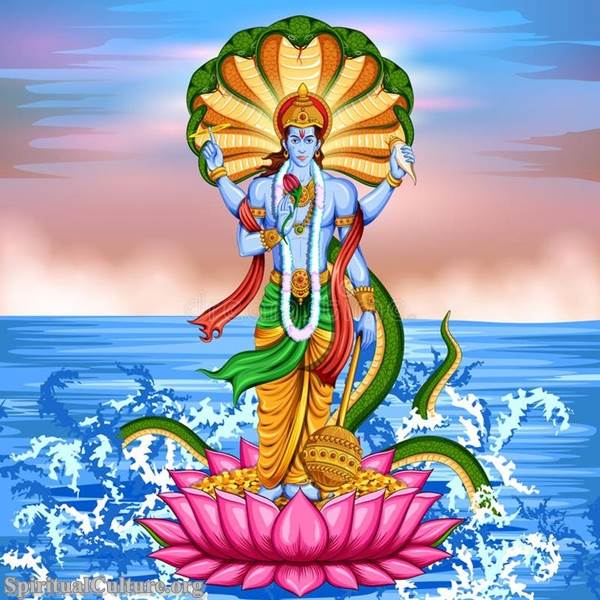The Ganges is not just a river. She is a mother, a goddess, a purifier of sins, and a symbol of eternal life. Flowing from the heights of the Himalayas to the vastness of the Bay of Bengal, the Ganges (or Ganga in Sanskrit) is one of the most spiritually significant rivers in the world. For Hindus, she is much more than water — she is divine.
This article, as Spiritual Culture, invites you into the sacred story and profound symbolism of the Ganges River in Hinduism. Why is she revered so deeply? What does she truly represent? How can flowing water hold the power to cleanse not only the body but also the soul? Join us as we explore the spiritual heart of this holy river — and what she still means for millions today.
The Ganges as a Divine Being
Ganga: The Living Goddess
In Hindu belief, the Ganges is not just like a goddess — she is a goddess. Known as Ganga Devi, she is often portrayed in divine form, riding a makara (a mythic sea creature), holding a water pot and a lotus flower.
Sacred Text Origins
The Rigveda, one of Hinduism’s oldest scriptures, already praises rivers with reverence. But it is in later epics like the Ramayana and Mahabharata, and especially the Puranas, that Ganga’s divinity is fully revealed. In the Bhagavata Purana, Ganga is described as the sacred water that flowed from the feet of Lord Vishnu during his incarnation as Vamana, making her touch divine from the very beginning.
“From the feet of the Lord flowed the sacred river Ganga, and she sanctifies the three worlds.” — Bhagavata Purana 5.17.1
This sacred origin story explains why the river is believed to carry the power of moksha — spiritual liberation.
A Mother’s Embrace
Devotees lovingly refer to the river as Ganga Maa — Mother Ganga. She is seen as a compassionate and patient mother who accepts all, no matter their past, and offers cleansing and comfort.
A River of Purification and Liberation
The Power to Cleanse Sin
Hindus believe that bathing in the Ganges washes away pāpa (sin) and helps cleanse one’s karma. During major festivals like Kumbh Mela, millions gather along her banks for ritual baths, believing that even a drop can absolve lifetimes of wrongdoing.
This belief is not mere metaphor. The Ganga is regarded as tirtha — a sacred crossing point between the human and divine. Her waters are thought to hold the power of penance and purification.
Pilgrimage and Ritual
Cities like Varanasi (Kashi), Haridwar, and Prayagraj (formerly Allahabad) are famed pilgrimage sites on the Ganga’s banks. Ceremonies such as Ganga Aarti, held each evening, are mesmerizing acts of devotion, with lamps, chants, and offerings released into the current.
“Just as fire is the purifier of metals, so is Mother Ganga the purifier of all sins.” — Skanda Purana
Ashes and Afterlife
It is common for the ashes of the dead to be immersed in the Ganges, especially at Varanasi, believed to be a gateway to liberation. To die and be cremated near the river is thought to guarantee moksha — freedom from the cycle of birth and rebirth.
The Mythological Descent of Ganga
The Story of Bhagiratha
One of the most beloved legends is that of King Bhagiratha, who undertook deep penance to bring the celestial river Ganga down to earth to purify the ashes of his ancestors. His unwavering devotion moved the gods, but the force of the divine river would have destroyed the earth. So Lord Shiva agreed to catch her in his matted hair and gently release her onto the land.
“To save the earth from destruction, Lord Shiva bore the force of Ganga’s descent upon his head.” — Ramayana
This story is more than just myth. It reflects the belief that great spiritual effort — tapasya — can channel divine grace into the world. Bhagiratha’s selfless act represents humanity’s longing for redemption, and the power of intercession through devotion.
Ganga as a Cosmic Connector
Flowing Between Realms
In Hindu cosmology, Ganga flows in all three worlds:
- Svarga (heaven)
- Prithvi (earth)
- Patala (netherworld)
This threefold flow is mirrored in the physical river’s journey from the Himalayas to the sea — symbolizing the soul’s passage through different states of being.
Ganga becomes a sacred bridge, linking humans with the divine. She is nitya — eternal — and even when polluted or dry in the physical sense, she remains pure in the metaphysical realm.
Symbol of Time and Transcendence
As she flows constantly, Ganga symbolizes time, movement, and impermanence. Yet she also represents transcendence — the ability to move beyond worldly attachments.
In this, she mirrors the path of yoga and spiritual practice: to enter the current of life while remembering the eternal beyond it.
Ecological and Ethical Dimensions
Reverence and Responsibility
The spiritual power of Ganga calls not only for worship but also protection. While the river remains sacred, it is also one of the most polluted in the world due to industrial waste, sewage, and human neglect.
There is a growing movement within Hindu communities and ecological circles to preserve and restore the Ganges, aligning environmental stewardship with dharma (moral duty).
“The Earth is our mother, and the rivers are her life-blood. To pollute them is to desecrate the divine.” — Modern Hindu Environmental Teaching
Caring for the Ganga is not just ecological but deeply spiritual — an act of honoring the goddess herself.
The Inner Ganga: A Metaphor for the Soul
Spiritual Flow Within
On a deeper level, the Ganga is not just an outer river but a metaphor for the inner stream of chaitanya — consciousness. The yogic tradition speaks of the ida, pingala, and sushumna nadis — subtle energy channels within the body — where inner waters flow toward awakening.
Just as the Ganga purifies the land, the inner Ganga cleanses the soul when awakened through meditation, devotion, and righteous living.
“There is a sacred river flowing within every being. Let it lead you to the ocean of the Self.” — Spiritual Culture
What This Means for You
The Ganges River is not merely a physical phenomenon. She is a living presence, a spiritual teacher, and a cosmic stream of grace. Whether or not you’ve stood on her banks or touched her waters, her message flows to all:
- That healing is possible
- That the past can be washed clean
- That the Divine is closer than we think
She teaches us that sacredness flows in the most natural things — in water, in breath, in movement, and in time.
Spiritual Culture invites you to see not only the Ganga but the “rivers” in your own life — the moments of flow, surrender, and cleansing — as holy. What would change if you treated them with reverence?
Let Ganga Devi remind you:
There is always a path to purity.
There is always a current leading home.
And even the most troubled waters can carry the light of liberation.



